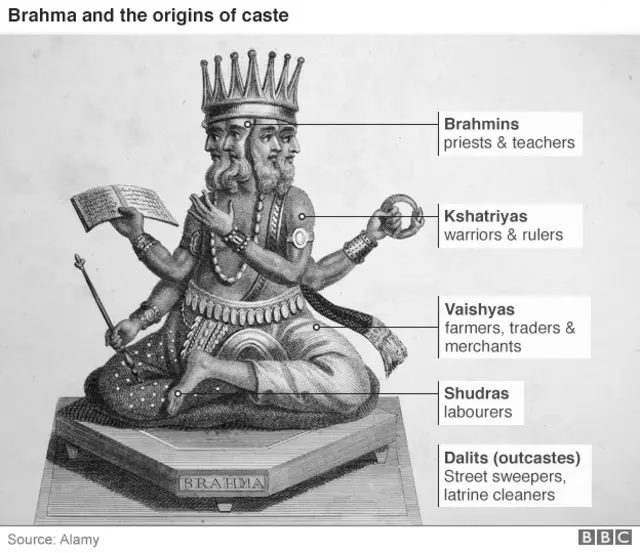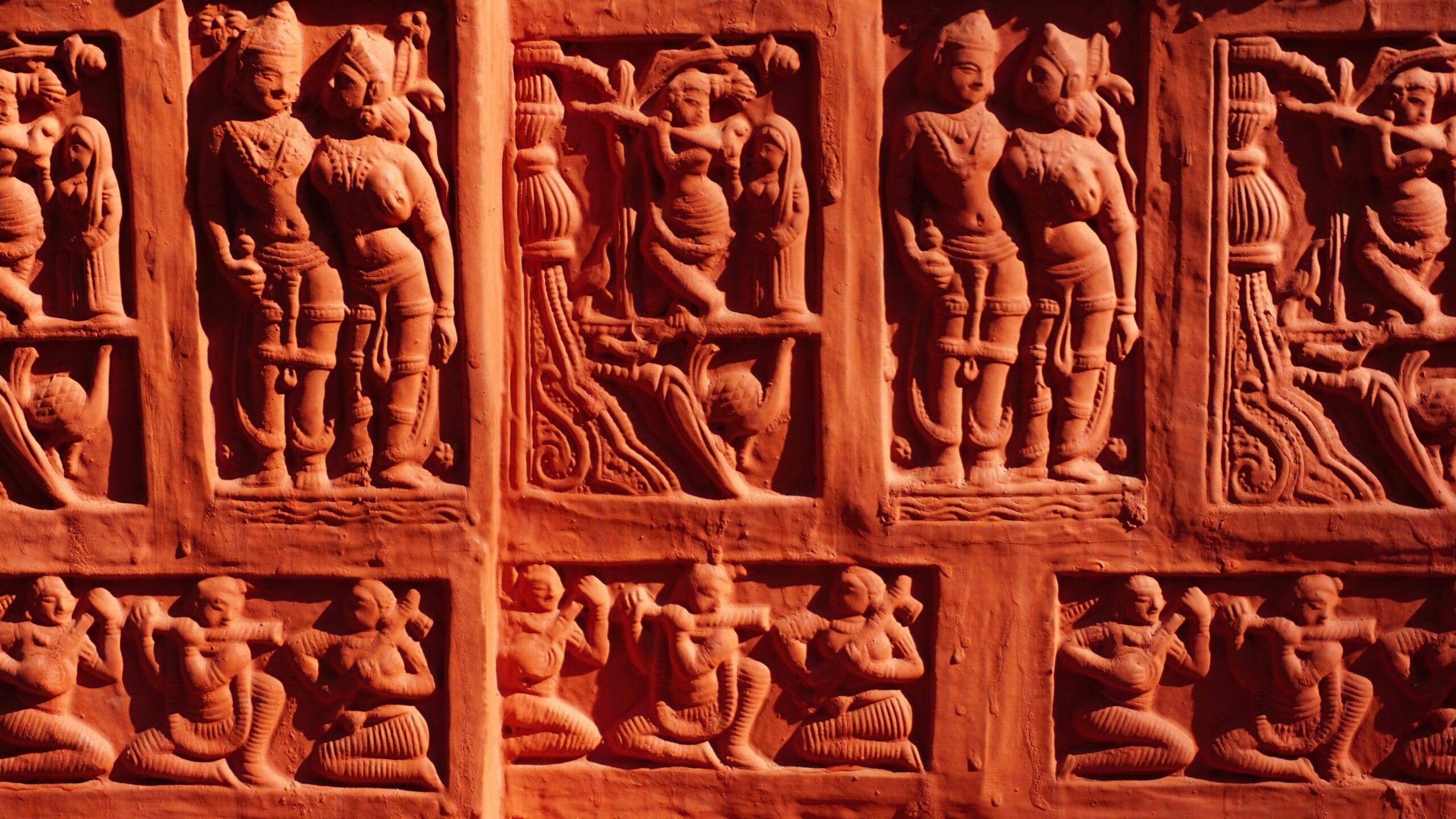Introduction: Is Bonded Labour an Economic Issue or a Caste Issue?
Bonded labour, often referred to as modern slavery or debt bondage, remains a significant and disturbing reality in India. While it is conventionally discussed as a purely economic problem linked to poverty and administrative failures, a crucial question persists: Is bonded labour merely an economic issue, or is it deeply and intrinsically linked to India’s caste system? This article delves into the nature of bonded labour, presents evidence of its disproportionate impact on marginalised castes, and contrasts the approaches of historical figures like Dr. B.R. Ambedkar and Mahatma Gandhi in addressing the plight of labourers.
Table of Contents:
- Understanding Bonded Labour: Definition and Reality
- The Disproportionate Caste Burden in Bonded Labour
- Data, Government Action, and Judicial Views
- Bonded Labour as a Form of Casteism: Historical Roots
- Historical Approaches to Labour Rights: Ambedkar vs. Gandhi
- The Ongoing Struggle and Need for Recognition
- Conclusion
- What you can do?
- Disclaimer
Understanding Bonded Labour: Definition and Reality
Defining Debt Bondage
Conventionally, bonded labour is defined as a system where individuals are compelled to work for an employer or creditor to repay a debt. This debt can be inherited, trapping generations in servitude. In economic and administrative discussions, it is often framed as ‘debt bondage’ or ‘loan slavery,’ focusing on issues like poverty, lack of governance, and law and order challenges. However, this perspective often overlooks the critical role of social structures, particularly caste, in perpetuating the practice.
Manifestations Across India
The grim realities of bonded labour manifest in various forms across the country. Reports highlight instances where individuals take small loans, sometimes as little as ₹1,000, only to be forced into years of labour. For example, a 2019 report detailed a 70-year-old man in Tamil Nadu held in bondage for 10 years over a ₹1,000 debt. Such cases, numbering in the thousands, underscore the severity of the exploitation, involving long hours, poor nutrition, and denial of basic human dignity.
Legal Frameworks and Constitutional Provisions
India has legal frameworks to prohibit bonded labour. The Bonded Labour System (Abolition) Act, 1976, officially abolished the practice. Furthermore, India’s Constitution includes provisions against forced labour. Article 23 prohibits human trafficking and forced labour, while Article 24 prohibits child labour below 14 in hazardous conditions, often linked to bonded labour. Despite these protections, the practice persists, indicating challenges in implementation and enforcement.
The Disproportionate Caste Burden in Bonded Labour
Why Marginalised Communities?
If bonded labour is purely an economic problem, why are the vast majority of bonded labourers from Scheduled Castes (SC), Scheduled Tribes (ST), and Other Backward Classes (OBC)? (These are official categories for historically disadvantaged communities, largely corresponding to those outside or at the bottom of the traditional varna system). Why is there hardly any representation from the Savarna (upper caste) communities?
Poverty Exists Across Castes, But Bondage Doesn’t
Literature often cites poverty, illiteracy, and indebtedness as primary causes. While these contribute to vulnerability, they don’t fully explain the skewed representation. For instance, a caste-based census in Bihar revealed that 25% of the Savarna population is also poor. Yet, despite this poverty, Savarnas are reportedly not found in bonded labour situations. This striking disparity suggests economic hardship alone isn’t the sole determinant.
Overwhelming Evidence from Rehabilitation Data
Data, though sometimes unofficial, consistently indicates that individuals from SC, ST, and OBC communities constitute the overwhelming majority of bonded labourers. Research published in 2018 estimated that about 10% of India’s total labour force might be in bonded labour, and among those rehabilitated, 83% were from SC/ST communities. This disproportionate representation strongly suggests that social identity, specifically caste, plays a critical role beyond simple economic hardship.
An Activist’s Perspective
A person extensively working in bonded labour abolition, Nirmal Gorana, the convener of the National Campaign Committee for Eradication of Bonded Labour, an organisation dedicated to the identification, rescue, and rehabilitation of bonded labourers at the national level, told The Wire that in decades of work rescuing individuals, they have never encountered a single bonded labourer from the Savarna community. This observation, based on significant ground experience, directly challenges the narrative that bonded labour is solely an economic issue. It compels us to examine the deeper, systemic factors rooted in caste that explain why vulnerability to debt bondage translates into actual bondage almost exclusively for those from marginalised castes.
Data, Government Action, and Judicial Views
Lack of Official Data
Official data on bonded labour prevalence is scarce. The government has historically not conducted comprehensive surveys. When questioned in Parliament, responses often indicate a lack of official data, relying on other sources or reporting only cases filed. For example, in 2016, the government stated a survey estimating 1.83 crore bonded labourers by a global foundation was not government-conducted, so details couldn’t be provided.
Estimates vs. Rehabilitation Reality
Estimates from non-governmental research and international bodies paint a concerning picture, with figures around 1.84 crore bonded labourers cited. The government set an ambitious target in 2016 to rehabilitate 1.84 crore bonded labourers by 2030, requiring about 13 lakh annually. However, recent reports show a significant shortfall. Data presented in Parliament shows annual rehabilitations numbering only in the hundreds, drastically lower than the target. A 2025 report highlighted only 468 rehabilitated in 2023-24, far below the required 13 lakhs.
Judicial Skepticism
Adding complexity, some judicial perspectives have questioned the extent of bonded labour. A September 2022 Supreme Court judgment reportedly included a justice commenting that NGOs were running a ‘racket’ in the name of bonded labour. This perspective, implying fabrication of bonded labour claims, contrasts sharply with ground realities and documented cases. While a November 2024 Supreme Court comment urged collaboration on trafficking and child labour, the skepticism regarding widespread bonded labour reflects a potential disconnect.
Bonded Labour as a Form of Casteism: Historical Roots
Religious Texts and Servitude
To understand this disproportionate impact, we must examine historical roots in the caste system (a traditional hierarchical social structure based on birth). Religious texts, like the Manusmriti, describe the Shudra varna (the social group traditionally assigned servitude) as having the duty to serve upper varnas (Brahmin, Kshatriya, Vaishya). Injunctions restricting the rights and wealth of Shudras suggest a state of subservience, laying a historical foundation for practices akin to slavery and forced labour.

Caste Hierarchy and Exploitation
The historical caste hierarchy created a ready pool of vulnerable individuals whose labour could be exploited. Intergenerational debt, often a trigger, becomes particularly oppressive when combined with caste-based social power imbalances. Dominant castes (landowners, creditors) leverage their social position and economic power to subject individuals from so called lower castes to perpetual bondage. The inherent prejudice and discrimination within the caste system meant exploitation of marginalised castes was often normalised, contributing to the persistence of bonded labour as a form of caste-based exploitation.
Historical Approaches to Labour Rights: Ambedkar vs. Gandhi
Dr. B.R. Ambedkar’s Impact
Examining historical figures reveals different approaches to labour rights. Dr. B.R. Ambedkar, as Labour Minister in the Viceroy’s Executive Council in the 1940s, made significant, pragmatic contributions to the welfare and rights of labourers. His efforts led to fundamental legislative changes, including:
- Reducing the working day from 12 to 8 hours (1942).
- Securing Dearness Allowance (DA), holiday entitlements, and minimum wage.
- Championing equal pay for equal work.
- Recognising labour unions and securing the right to strike.
- Introducing maternity leave benefits for women workers.
These reforms directly improved the lives and working conditions of millions of labourers, many from marginalised communities.
Mahatma Gandhi and the Ahmedabad Mill Strike
Mahatma Gandhi is often associated with the Ahmedabad Mill Strike of 1918 as a key labour intervention. During this dispute over a ‘plague bonus,’ Gandhi intervened, advising workers to demand a 35% wage increase after mill owners offered 20% and workers demanded 50%. A settlement was reached at 35% following Gandhi’s hunger strike.
Evaluating Their Impact
While framed as a victory, the Ahmedabad outcome resulted in workers receiving less than their demand (35% instead of 50%), and owners conceding only 15% more than their offer (35% instead of 20%) to end the strike.
Gandhi’s intervention, while enhancing his political image, primarily managed the situation for industrialists (many of whom funded the Congress party). In contrast, Dr. Ambedkar’s legislative work brought systemic, nationwide changes to labour rights, impacting millions directly. This comparison highlights the difference between localized political interventions and comprehensive legal reforms in addressing labour exploitation.
The Ongoing Struggle and Need for Recognition
Barriers to Eradication
Despite legal prohibitions and constitutional safeguards, bonded labour persists, deeply intertwined with social inequalities. Barriers include the lack of data, inadequate law enforcement, administrative indifference (like reluctance to issue release certificates), and the vested interests of those benefiting from cheap, forced labour, often rooted in caste-based power structures. The skeptical views from some judicial bodies further hinder progress.
Identifying Bonded Labour as Casteism
Given the overwhelming demographic evidence and historical context, bonded labour in India must be explicitly recognised and addressed as a form of casteism, not just an economic or law-and-order problem. Framing it solely in economic terms obscures the systemic discrimination and exploitation faced by marginalised castes, who are inherently more vulnerable due to their social position and historical disadvantage. Acknowledging the caste dimension is crucial for developing effective strategies for identification, rescue, and rehabilitation.
Conclusion
Bonded labour in India is not merely an economic issue driven by poverty; it is a deeply rooted problem intrinsically linked to the caste system. The overwhelming majority of bonded labourers come from SC, ST, and OBC communities, a disparity that cannot be explained by economic factors alone, as poverty exists across all social groups. Historical context reveals how the caste hierarchy created conditions for the exploitation of lower castes, practices that continue today through debt bondage and forced labour. Despite legal frameworks, lack of official data, inadequate enforcement, administrative inertia, and even skepticism from parts of the judiciary allow this dehumanising practice to persist.
Recognising bonded labour as a form of caste-based exploitation is essential for developing targeted policies and ensuring that rehabilitation efforts reach those most affected by this modern form of slavery. The legacies of leaders like Dr. B.R. Ambedkar, whose legislative reforms brought tangible rights to millions of workers, contrast with approaches that may have served political goals without addressing the systemic roots of labour exploitation.
What you can do?
Combating bonded labour requires acknowledging its caste dimension and advocating for change. Engage in informed discussions and share accurate information about bonded labour’s link to casteism. Support organisations working on the ground for the identification, rescue, and rehabilitation of bonded labourers from marginalised communities. Pressure elected officials and government agencies to prioritise robust data collection, strict enforcement of the Bonded Labour System (Abolition) Act, 1976, and effective, timely rehabilitation for rescued individuals. Challenge narratives that ignore or downplay the role of caste in perpetuating this form of modern slavery. Your awareness and advocacy are crucial steps towards eradicating this shameful practice.
Disclaimer
This article utilizes terms and concepts discussed in the provided transcript. The following terms are used in the context presented in the source material:
- Bonded Labour/Bonded Labor/Debt Bondage: A system where individuals are forced to work against a debt, often extending across generations, with inadequate compensation or freedom.
- Rehabilitation: The process of helping rescued bonded labourers reintegrate into society, providing them with support, compensation, and opportunities for a dignified life.
- Dearness Allowance (DA): A component of salary paid to employees to offset the impact of inflation.
- Maternity Leave: Paid leave provided to women employees during pregnancy and after childbirth.
- Right to Strike: The right of workers to collectively stop work to protest or demand better working conditions or wages.
- Equal Wages for Equal Work: The principle that individuals performing the same job should receive the same pay, regardless of gender or other factors.
- Trade Unions: Organizations formed by workers to protect and promote their rights and interests.
- Plague Bonus: An extra payment given to workers, in this context during a plague epidemic, to compensate for increased costs or risks.
- Bonded Labour System (Abolition) Act, 1976: Indian law that prohibits bonded labor.
Read more about casteism in Indian Prisons!!
Learn more about the legal battles in history against casteism!!
Do you disagree with this article? If you have strong evidence to back up your claims, we invite you to join our live debates every Sunday, Tuesday, and Thursday on YouTube. Let’s engage in a respectful, evidence-based discussion to uncover the truth. Watch the latest debate on this topic below and share your perspective!

